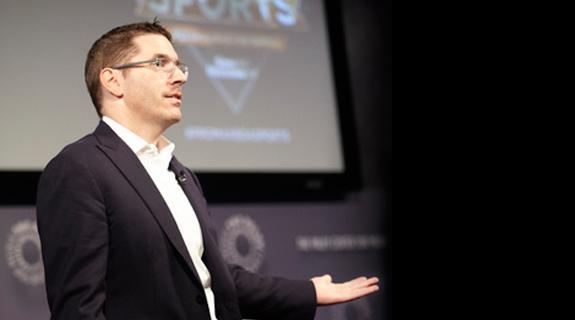When Austrian skydiver Felix Baumgartner leaped to Earth last fall, his jump, watched live on YouTube, generated eight percent of the world’s Internet usage for five minutes. That’s an audience capable of creating some serious social buzz.
Sports on YouTube, be it fan-created highlight clips or full games, continues to be an astronomical growth segment. Between 2010 and today, sports viewing on the site has increased by 500%, according to Frank Golding, Google’s director/head of sport for North America during his keynote address at the PromaxBDA Sports Marketing Summit at the Paley Center for Media in New York City.
“When you pay billions for sports rights, you’re going to create great content and that content is going to be really fresh,” Golding told the audience at the Paley Center For Media. “Where does all that content go? It’s got to go somewhere and we’ve got a very big home.”
Golding spoke of a “million-channel generation” that a social media tool like YouTube seems uniquely positioned to cull through to find appropriate audiences for marketers to target.
“We’ve gone from a time where there were four channels to 1,000, then 5,000 with nothing on,” Golding joked. “We are building right now for the million-channel generation.”
Highlighting four keys to successful brand marketing in an evolving media world, Golding began by focusing on the idea that data is king. Generating information about fans allows sports marketers to increase interactivity with the audiences they covet. “You can use your brand to create a two-way conversation across the globe,” Golding says.
YouTube uses advanced algorithms to run ads against content that it thinks will connect interested viewers to relevant products.
“The data is going to open up vast arrays of connections that are not humanly possible today,” Golding said. “If there’s one thing I can leave you with: get the data.”
Golding says sports leagues and professional content producers should embrace fan-created content as a way to amplify their reach. Official video views of sports clips on YouTube are sometimes multiplied 200 or 300 percent by fans. “The goal is to use your fans to help you,” Golding says.
Mobile continues to be a huge opportunity for growth, Golding says, referring to it as the “first screen.” While TV add dollars still largely outpace mobile, Golding advised marketers to jump into the space, noting that ESPN’s mobile properties draw more unique visitors than ESPN.com. “This social platform is the future and I’m imploring you to get on board.”
Caption: Frank Golding, Google’s director/head of sport for North America, addresses the crowd at the PromaxBDA Sports Marketing Summit.
[Image courtesy of PromaxBDA]
Tags:













































__twocolumncontent.jpg)











